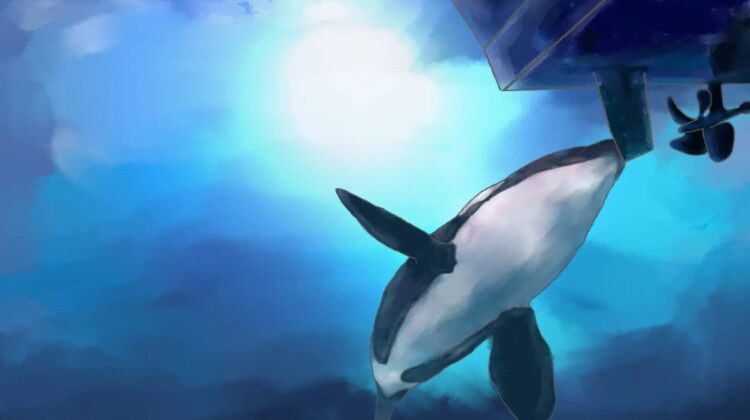
For the last five years, killer whales have been ramming – and in some cases sinking – expensive yachts, fishing boats, and motorboats in the crystalline waters off the coast of Spain, Portugal, France, and Morocco. The reason for this behavior had been a mystery – until recently.
A multinational group of orca experts, sponsored by the governments of Spain and Portugal, met in February and released a report outlining why they think this is happening and what can be done to stop it.
What originally appeared to be attacks on more than 673 boats since 2020 now seems more likely to be a bunch of bored teenage orcas looking for something to do, said cetacean expert Alexandre Zerbini. Essentially, the whales started a fad of playing with boat rudders.
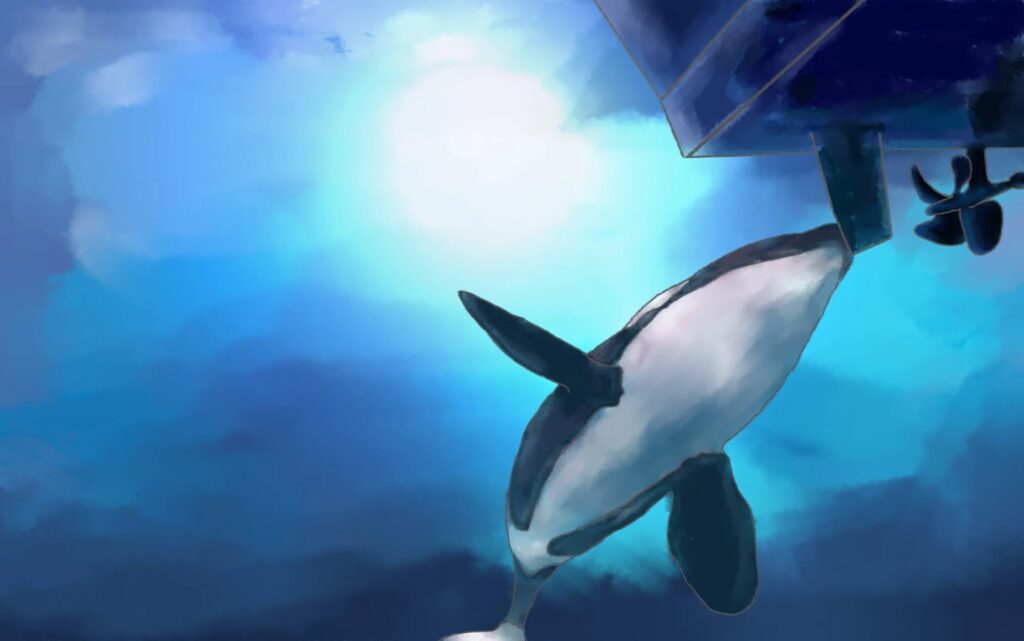
The report comes two weeks after the first ramming of the season, which resulted in a sailboat sinking at the southern entrance to the Strait of Gibraltar. On the morning of May 12, a group of orcas snuck up on a 50-foot sailboat and dove at its rudder, damaging the Alborán Cognac and causing a leak that eventually sank the boat. The two crew members were evacuated to a nearby oil tanker, according to the Spanish newspaper El Pais.
These encounters have been going on for five years, with the first documented encounter happening in May 2020. Since then, at least five sailboats and two Moroccan fishing boats have been sunk.
“It starts in the spring, goes way off the charts in the summer, and goes away in fall. That’s because the whales and boats are in the same area at the same time,” said Naomi Rose, a senior scientist with the Animal Welfare Institute in Washington, D.C., who was part of the working group.
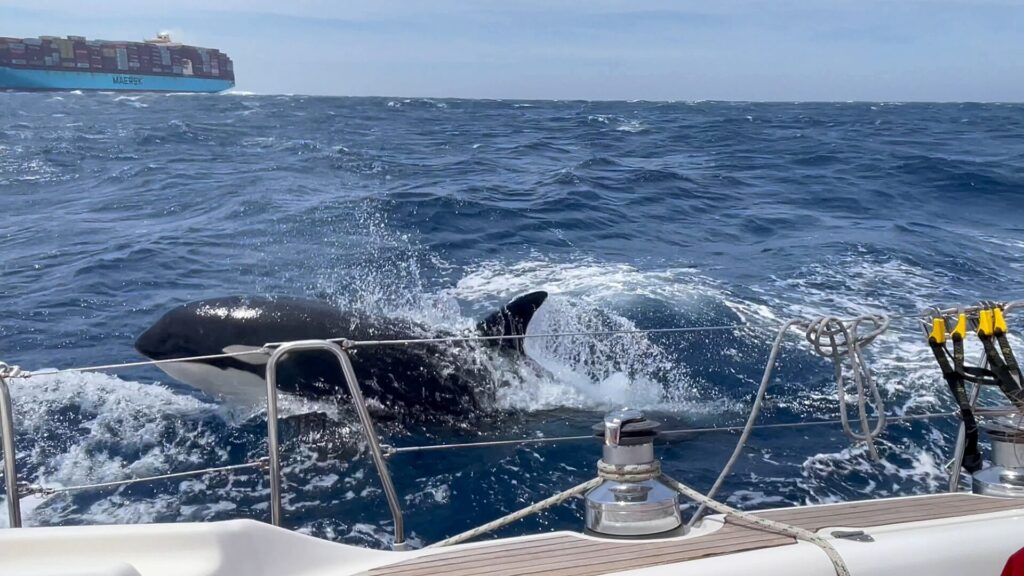
This group of orcas interacts with the vessels because they are being enriched by the experience, said Renaud de Stephanis, president of CIRCE (Conservación, Información y Estudio sobre Cetáceos), an organization dedicated to preserving marine life. De Stephanis has been studying orca behavior for over 25 years and was also at the gathering of scientists in Madrid.
“The sea is a very boring place for an animal,” said de Stephanis. “Imagine if you’re a dog or some other mammal, you can interact with objects around you. But in the sea, there’s not much for the orcas to interact with, so they play with the rudders.”
Overall, the incidents have mostly involved juveniles, who are “more playful and courageous in approaching boats,” said Zerbini, who also chairs the International Whaling Commission’s scientific committee. He imagines a young orca butted its head against a boat’s rudder one time and when it moved, the orca thought, “This is fun.” After ramming it a few times, a piece of the rudder broke off and that was even more fun because there was something to play with.
“There’s documented evidence of the orcas then playing with the pieces,” he said.
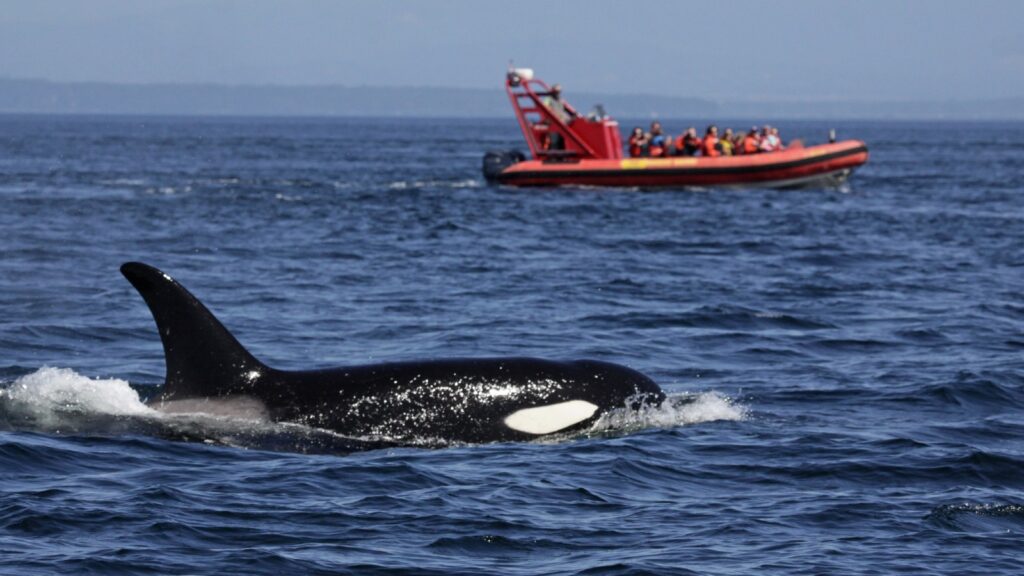
Orcas, which are also called killer whales, are actually the largest member of the dolphin family. Dolphins, in turn, are a type of toothed whale, a group that also includes porpoises, beaked whales, and sperm whales.
This type of behavior isn’t surprising, given that orcas have culture, exhibit coordinated behavior, share knowledge, and have long memories, said Rose.
“It’s a very sophisticated thing to do something for no purpose other than that it amuses you,” she said.
There was no evidence that the attacks are being led by older female orcas in revenge for a boat harming a young whale, as has been suggested at times, the group said. The notion took the internet by storm in 2023, with “Sink the rich” mugs and T-shirts featuring killer whales on them proliferating.
“That’s probably based on people watching Hollywood movies,” Zerbini said.
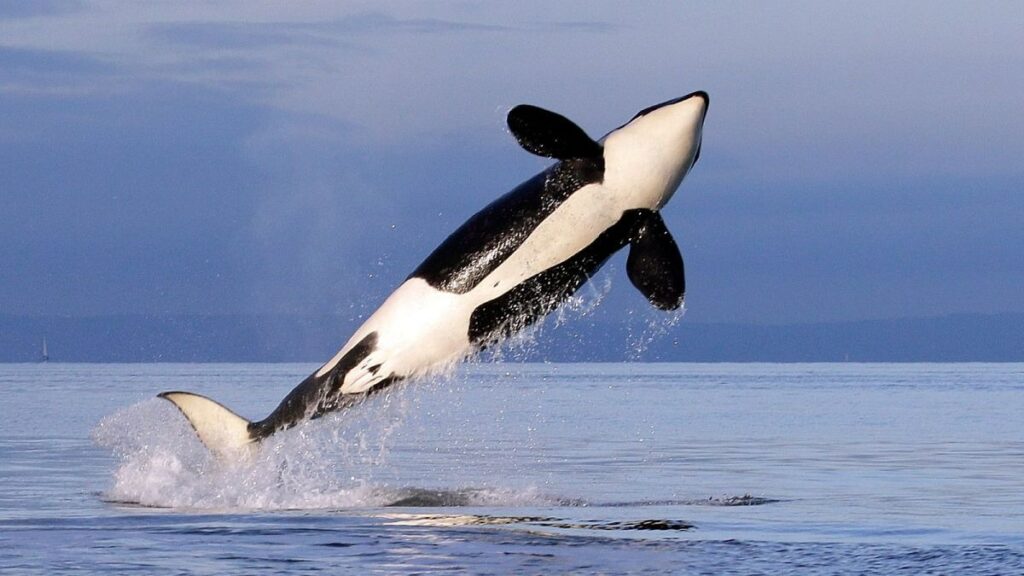
Despite the number of news reports that have suggested the matriarch revenge theory, “I tracked it down and it never happened,” said Rose.
In the face of what they felt was incorrect information about the motivations behind the encounters, she and close to 80 other marine biologists published an open letter in September saying they didn’t believe that was what was behind the incidents.
“Science cannot yet explain why the Iberian orcas are doing this, although we repeat that it is more likely related to play/socializing than aggression. However, it is unfounded and potentially harmful to the animals to claim it is for revenge for past wrongs or to promote some other melodramatic storyline,” they wrote.
The new Spanish/Portuguese report underscores this and adds why it might have happened – the recovery of the bluefin tuna orcas prey on.
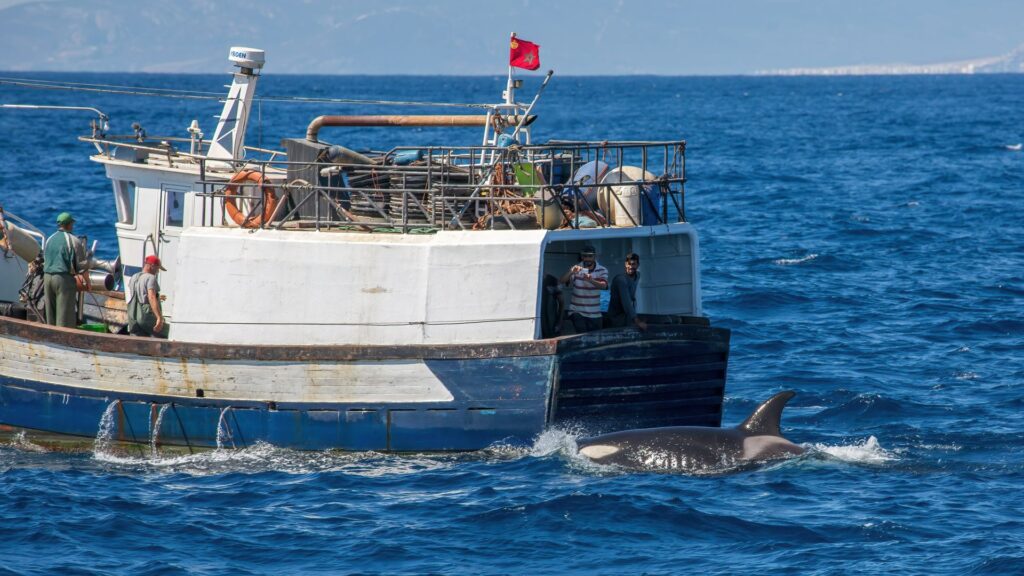
A surprising chain of events is behind the encounters, the scientists believe. This particular population of Iberian killer whales is critically endangered, in part, because its primary prey were bluefin tuna that had long been overfished and were in decline. That meant the orcas had to spend lots of time hunting and feeding, leaving little space for the kind of play juveniles are known for.
Better protections have meant the tuna population rebounded in recent years. Climate change may also play a role, leading the tuna to be abundant in the Gulf of Cádiz year-round rather than seasonally. “This year-round abundance means that there appears to no longer be a need for the whales to pursue every fish encountered,” the report said. That was good for the orcas but may be the cause of the problems for boaters, said Zerbini.
Effectively, the killer whales “have time on their hands,” he said, “so they’ll go start playing with rudders.”
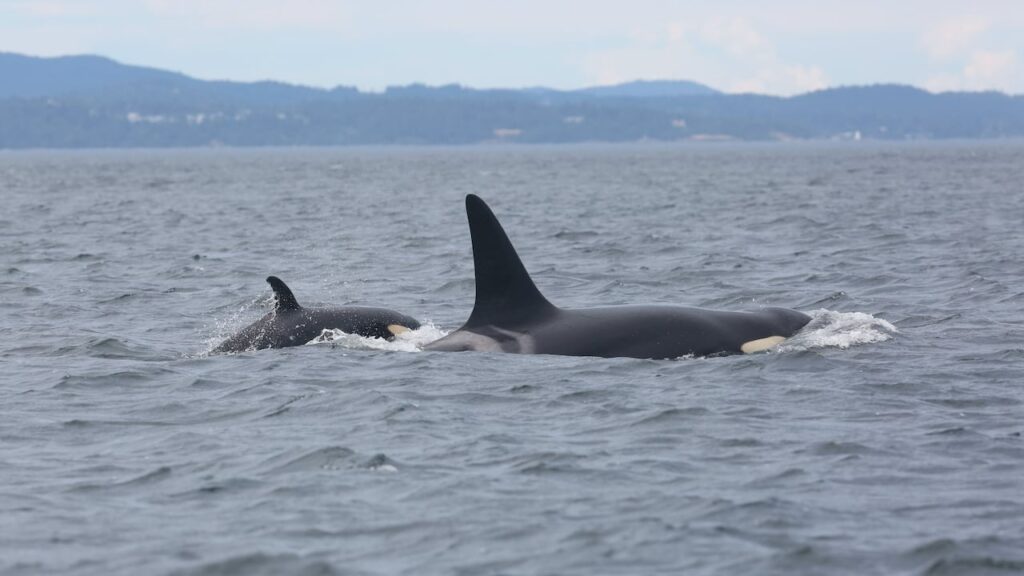
Killer whale groups, especially younger individuals, are known for their fads and idiosyncrasies. In the Pacific Northwest, one group of killer whales suddenly got into the habit of carrying dead salmon around on their heads in 1987. The fad arose and spread widely among the group that summer. The salmon hats craze began with adolescent orcas but then spread, said Rose. “By the end, everyone was wearing them, including the adults,” she said. Then the fashion dropped out of style as quickly as it had begun.
Zerbini thinks the craze for ramming rudders among the Iberian killer whales is probably a similar fad. “They are very intelligent and playful animals,” he said. Only about 15 out of the fewer than 40 or so killer whales in this population are engaging in the behavior.
“We think the orcas are getting something out of it, they are enjoying what’s happening. They’re playing,” he said. “Obviously, they don’t understand that that play can mean harm to the boats.”
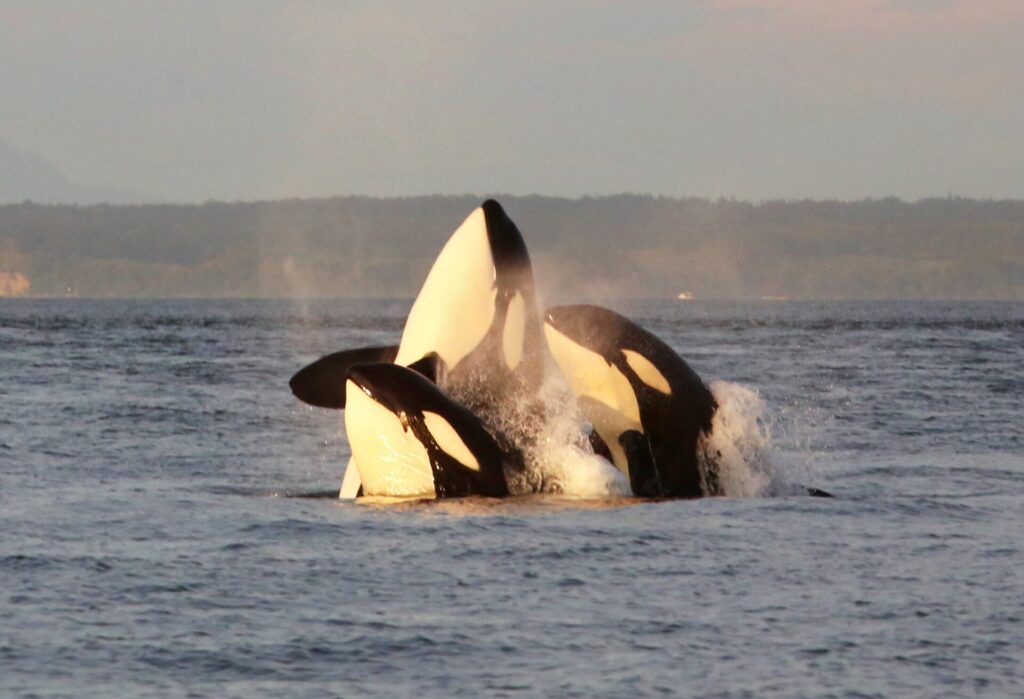
The group discussed methods to deter the orcas from interacting with the rudders. One method that de Stephanis is testing involves altering the surface and appearance of the rudder. “The orcas are very timid and careful, these plastic protuberances create acoustic sounds when the orcas scan the rudder,” said de Stephanis. In addition, orcas really hate jellyfish, so adding flowing pieces behind the rudder gives it the appearance of a jellyfish and deters the orca, de Stephanis added. Another possible deterrent: hanging lines on weights into the water around the boat.
For now, workshop participants suggest mariners avoid areas where the Iberian killer whales are likely to be from May to August, stay closer to shore in shallow areas, and move at least a mile away from any orcas who begin to interact with their boats, preferably toward shore to make rescue faster, should it be necessary.
The suggestions, which have been communicated to boaters in areas where the killer whales are interacting with vessels, appear to already be having an effect. Since changing the recommendations to advising vessels to flee the interaction immediately, vessel rescues have declined by 80% from May 2023 through May 2024, said de Stephanis. During that same period, the number of interactions (when an orca touches a vessel) has declined by 70%, he said.

Leave a Reply